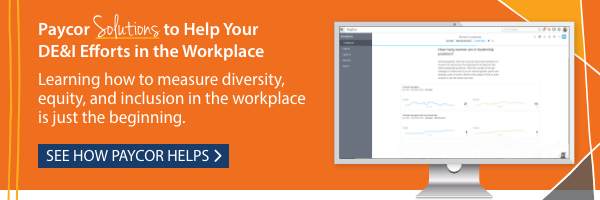When you promote diversity, equity, and inclusion (DE&I), everybody wins. And it’s not just about ethics: studies show when companies prioritize DE&I, they outperform competition by a wide margin. (McKinsey). These teams are more innovative and better at problem-solving. But here’s the catch: unconscious biases often hold people back.
In this article, we’ll explore implicit bias: what it is, where it comes from, and how it affects corporate culture.
What is Implicit Bias?
On some level, everyone has implicit biases – unconscious attitudes or stereotypes about other people. These opinions are shaped by social norms and past experiences, running so deep they’re hard to identify. Without some serious soul-searching – and external support – they can wreak havoc on relationships, including professional ones.
Implicit Bias at Work
Implicit bias can affect every part of the employee experience. Recruiters might unconsciously judge candidates based on their names, outward appearance or LinkedIn photos. Managers might assign high-profile projects to male employees, while they only ask women to take notes. These behaviors are so normalized, it can take effort to notice them – and even more effort to interrupt them.
Here’s a real-life example: in one viral story reported by HuffPost, editor Martin R. Schneider noticed clients were being rude to him in their emails. After a while, he noticed the problem: he and a female co-worker, Nicole Hallberg, had accidentally switched email signatures. He spoke to her about it, and they agreed to run an experiment and keep using each other’s names. Other than that, they changed absolutely nothing about the way they communicated with clients.
The result? In Hallberg’s words, “I had one of the easiest weeks of my professional life. He… didn’t.” Schneider went into more detail on social media, saying “Everything I asked or suggested was questioned. Clients I could do in my sleep were condescending. One asked if I was single” (People).
After a week of this experiment, Hallberg and Schneider told their boss about their findings. He refused to believe them. So, Hallberg quit.
What is Implicit Bias Training?
Implicit bias training is designed to help employees support each other, and to help leaders be more supportive. These learning modules teach you to identify and work through unconscious but deeply held beliefs. Some teams see success through:
- Interactive workshops that engage employees, raise awareness, and invite them to learn from each other.
- Online learning paths where team members can learn new skills and process their responses in private.
- Real-world goals, encouraging people to take what they’ve learned and put it into practice in the workplace.
When you’re working through implicit bias, soft skills are essential – especially empathy. Amy Hull, Paycor’s Head of DE&I, spoke to this in our webinar, Understanding Bias and Taking Action. “Awareness and empathy will increase psychological safety, reduce the chances of implicit or unconscious bias, and increase diversity of thought,” she explained. “And building empathy takes practice…a large part of it is having the emotional intelligence to be aware of self as well as aware of others.”
HR also needs to take an active role in implicit bias training. This is a crucial way for leaders to influence corporate culture. Start by reviewing your own practices to make sure they’re aligned with your company values. As you make improvements, share them with your team. Being transparent can foster trust and accountability.
Implicit Bias Training Within Your DEI Strategy
It’s important to note that implicit bias never goes away completely. You might be able to root out explicit bias – that is, conscious or overt stereotypes – but by definition, implicit bias remains hidden. Working through these opinions is an ongoing process, not a one-time goal.
Implicit bias training is an important piece of DE&I, but it’s not the whole picture. Employees and leaders also need to enact what they learn. It’s important to measure your progress as you make these changes. For example, that could mean tracking new hire demographics or surveying your team to see if they feel supported at work. You might have to update your training process based on your findings.
How Paycor Helps
Paycor’s suite of HR software empowers diverse teams. If DE&I is a priority for your company, these tools could be especially helpful:
- Our AI recruiting software is purpose-built to interrupt implicit bias, making the hiring process more equitable.
- Paycor Pulse surveys allow leaders to collect honest information from employees in a psychologically safe way. With that information, you can improve your DE&I strategy in a way that supports your unique team, in addition to reaching key metrics.
- Share important skills with your whole team through our learning management system.
- Paycor Paths gives managers personalized training programs to help them develop leadership skills, including implicit bias training.
Explore our tools to learn how our Paycor can supercharge your DE&I strategy.










